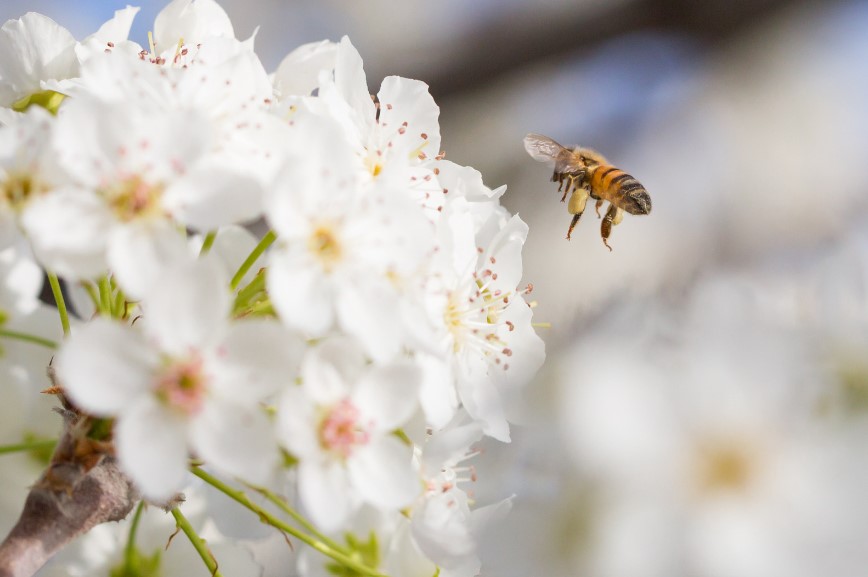Supporting biodiversity in arable farming
By Tim Read, Earth Trust Senior Ranger
As we head towards summer we are starting to see more insect life across our places. Insects like bees, butterflies and moths pollinate flowers and form a vital part of our ecosystem. They ensure that crops produce the food we need and plants that need animal pollinators can survive.
Unfortunately, populations of wild pollinators have declined – as many as 1 in 10 pollinating insects in the EU are threatened with extinction. This is in part because modern crops are designed to maximise productivity and grow very densely. This is great for producing food, but has reduced the biodiversity associated with arable farming.
At the Earth Trust Farm, we try to help our pollinators by including species-rich wildflower meadows and margins, cultivating margins for cornfield flowers, and by minimising our use of pesticides.
Wildflower margins
Across the farm we have wildflower margins established around most of our arable fields, measuring between five and fifteen metres wide. At North Farm the margins total about a hectare in size, so these smaller areas soon add up. We manage the margins in a similar way to the meadows – they are alive with flowers and insects throughout the summer, and then cut in the autumn.
Cultivated margins (cornfield flowers)
In the past arable fields would have been interspersed with cornfield flowers such as poppies, cornflowers and ox-eye daisies. We encourage these cornfield flowers with our cultivated margins. These are lightly ploughed to disturb the soil and then left to allow annual plants to germinate. This produces a variety of plants similar to our wildflower margins, but with a different composition of species (the ones which historically would’ve grown in amongst our crops).
Creating habitat with purpose
Both wildflower and cultivated margins help draw pollinators and insect predators (which eat some of the pests that might otherwise need to be controlled using chemicals) into the crop. The margins provide nectar for pollinators in the summer as well as an overwintering habitat for insects, and seeds and nesting space for birds. Ultimately, they create a habitat which can support our wildlife-rich farm and help us all to enjoy a more biodiverse environment.

If you’re visiting Earth Trust green spaces, please enjoy the view of our wildflower and cultivated margins from the footpaths to avoid disturbing nesting birds and to protect new growth. Thank you!
Find out more about our beekeepers and how this biodiverse landscape supports both bees and business here.